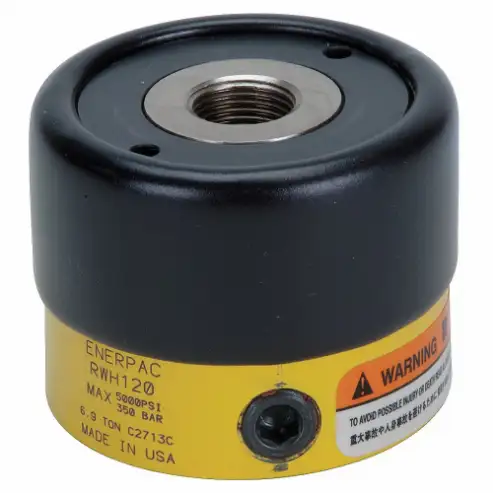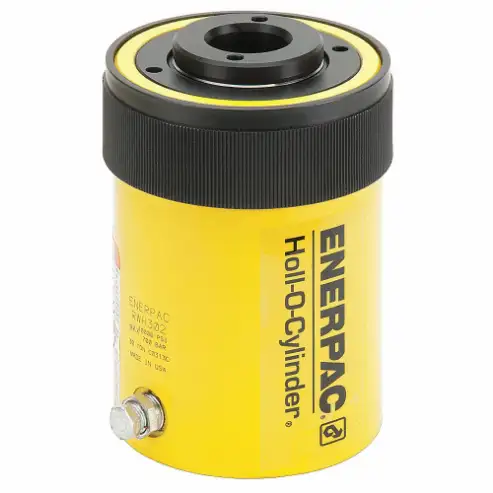Enerpac RWH121 hollow plunger hydraulic cylinder is used in applications where a threaded rod or other objects need to pass through the centre of the plunger. This design allows for more versatile applications, such as tensioning, testing or applying force in confined spaces.
Features:
- Enerpac RWH121 hollow plunger hydraulic cylinder features steel construction for structural rigidity.
- This hydraulic cylinder has threaded collars & base mounting holes for ease of mounting on T-slots and table-top surfaces.
- It has spring return operation to facilitate easy unloading of the workpiece.
- This hydraulic cylinder can withstand loads up to 13800 lb and pressures up to 5000 psi .
Frequently Asked Questions:
Q. What is a hollow plunger cylinder?
A. Hollow plunger cylinder is a type of hydraulic cylinder with a centre bore in the plunger, allowing for the passage of a threaded rod or other attachments.
Q. What is the role of the spring return mechanism in a hollow plunger cylinder?
A. The spring return mechanism assists in retracting the plunger once the hydraulic pressure is released. It provides unloading of the workpiece and prepares the cylinder for the next operation.
Q. What is the difference between a hydraulic cylinder and a pneumatic cylinder?
A. Hydraulic cylinders use pressurised hydraulic fluid, while pneumatic cylinders use compressed air. Hydraulic cylinders can generate much higher pressures and deliver significantly greater force compared to pneumatic cylinders. It makes hydraulic cylinders suitable for heavy-duty applications, while pneumatic cylinders are used in lighter-duty tasks.
Q. What are the parts of the hydraulic cylinder?
A.
- Cylinder Barrel: Main body providing support and housing for other components.
- Piston: Cylindrical component separating the cylinder into chambers, enabling fluid action.
- Piston Rod: Extends from the piston to transmit force to external load or machinery.
- Gland and Seal: Secures piston rod and contains seals to prevent fluid leakage.
- End Cap: Closure and support component located at the ends of the cylinder barrel.
- Ports: Entry and exit points for hydraulic fluid.
- Mounting Options: Various ways to securely attach the cylinder to equipment or machinery.
- Cushioning Devices: Devices to dampen impact and reduce wear at the end of the stroke.
 Change Country
Change Country


